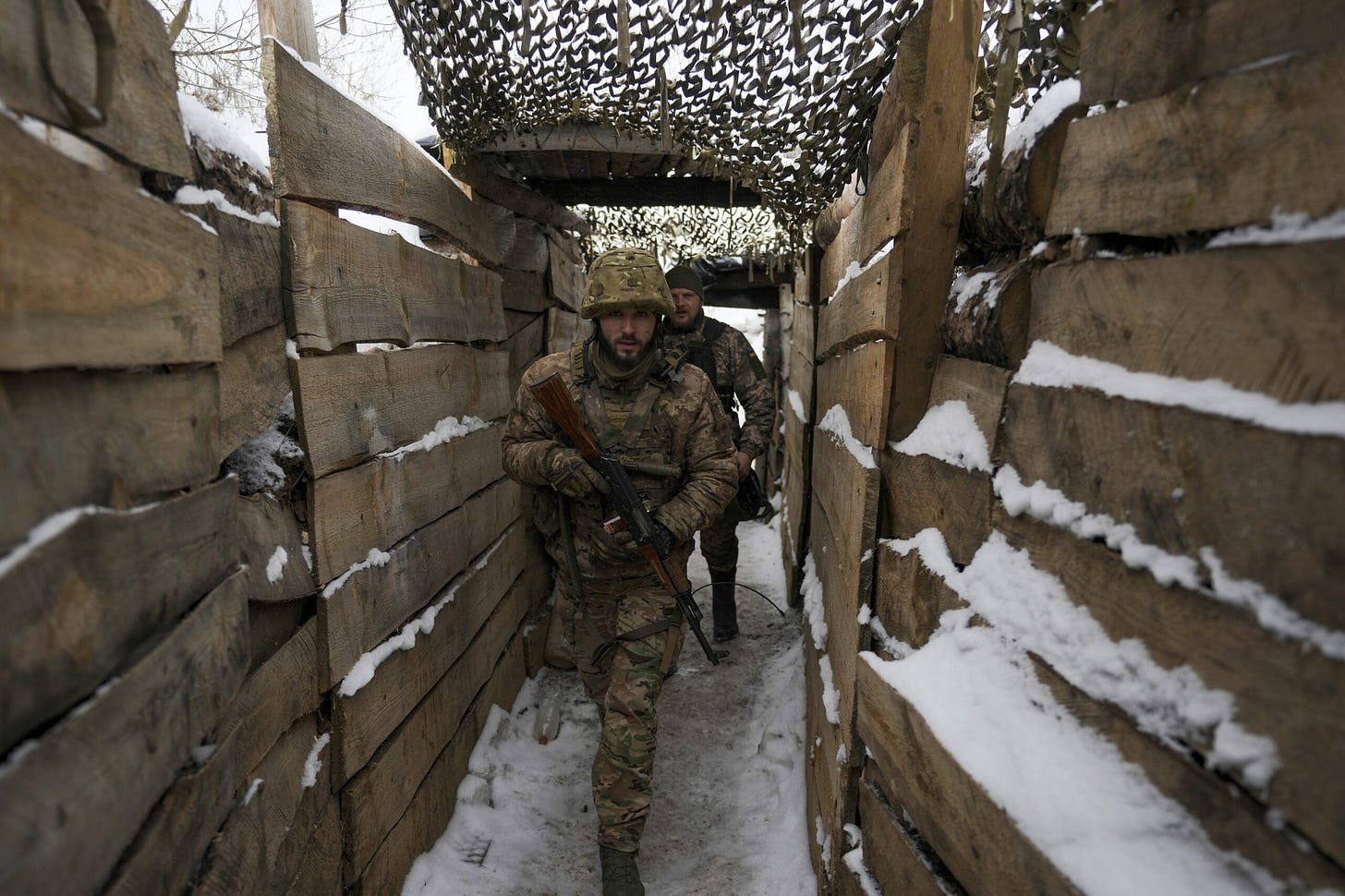Tensions increased today as Vladimir Putin formally recognized the Donetsk and Luhansk regions as independent “people’s republics” and ordered Russian forces into the eastern part of Ukraine for “peacekeeping functions.”
There hasn’t been peace in eastern Ukraine since Russia backed a separatist movement in 2014 to break away from Ukrainian control of the region. War broke out along a line between Donetsk and Luhansk and the rest of Ukraine. According to the Ukrainian government, as many as 15,000 of its citizens have lost their lives during the seven years of fighting.
The White House announced this afternoon that it will impose sanctions on the two separatist regions of Ukraine. No sanctions were imposed against Russia for recognizing the independence of the so-called republics. The sanctions imposed today would prohibit investing, trading with, or financing institutions in the two disputed regions, according to Jen Psaki, the White House spokesman. “To be clear: These measures are separate from and would be in addition to the swift and severe economic measures we have been preparing in coordination with allies and partners should Russia further invade Ukraine,” she said.
It wasn’t immediately clear if the sanctions would change to include Russia after Putin announced he would send “peacekeepers” into the breakaway republics of Ukraine. Despite the fact that the regions had declared independence in 2014, Ukraine still considers them part of its country, so the “peacekeepers” could be seen as the first instance of Russian combat forces on Ukrainian soil.
Putin’s moves today were classic escalations of political tension and military aggression. The problem for the United States and its European allies is that Putin is engaged in classic mission-creep with his military. First, they’re defending Russia from alleged Ukrainian “aggression” which never took place. Now his forces will be defending the “independent” republics he just recognized, no doubt claiming he did it at the invitation of rebel leaders.
We did the same thing in Afghanistan after we drove Al Qaeda and the Taliban from the country in 2001. The newly formed government of Afghanistan “invited” us into the country, leading to our establishment of a large military force that quickly grew in response to attacks from Taliban and Al Qaeda militants that would come into Afghanistan from positions in Pakistan along the border with the two countries. This led to multiple escalations, from a few U.S. thousand troops at first to tens of thousands in later years.
Putin naming his forces as “peacekeepers” is another classic Russian trick, at once upping the ante and making it more difficult for the U.S. and European allies to retaliate against him.
Unmentioned in all of Russia’s recent moves is the fact that they’re being done by a nation with enough nuclear weapons to wipe out huge parts of both Europe and the U.S. if war were to break out. You don’t see nuclear weapons mentioned in either White House statements or speeches by Putin, but they’re in the minds of every diplomat and national security figure from NATO who just met at the Munich security conference.
Putin can be seen in many ways – as an authoritarian dictator resentful of the breakup of the USSR, as an international outlaw for his seizure of Crimea and the moves he has made in Georgia – but it would be a mistake to see him as a rational actor. That he has his finger on Russia’s nuclear trigger is the X Factor in all of this, and no doubt the reason he figures he can pretty much do what we wants in and around Ukraine without military retaliation by NATO. By putting his forces into the breakaway republics of Eastern Ukraine, he’s now going to start taking casualties from the fighting that has been going on there for seven years. He can use the death of Russian troops to justify taking a larger bite of Ukrainian territory in the east, or he can just sit there with Russian forces on Ukrainian soil and say, in effect, what are you going to do about it now?
The delicate dance between Joe Biden and Antony Blinken on the one hand, and Vladimir Putin and Sergey Lavrov on the other has just gotten a lot harder to negotiate, and this isn’t the end of Putin’s military escalation and attempts at justification with lies and fakery. That all of this will now take place in a part of Eastern Ukraine that is already a battlefield is bad news indeed.




I am sure other observers have noticed this historical parallel. Putin is following the same expansionist model used by Hitler against Czechoslovakia in 1938 by making an imperial claim to provinces of a neighbor based on historical ethnic or cultural ties. Then seize the so called disputed land of said sovereign state to be reunited with the fatherland accompanied by talk of liberation or a peacekeeping action to stop evidence-free accusations of mistreatment by the hands of the victimized nation.
The take over of Crimea in 2014 became Chapter 7 in my Headline Calendar book/tapestry. (https://romytittel.com/books/headline-poem/) This was one of my observations at the time;
"Apparently those warships and naval bases in Crimea didn’t actually contain any weaponry as not a single shot was fired to defend against the Russians, only potted plants that were liberated by the staff as they marched their belongings back to the Ukraine."
The same playbook is being used today. The whole world was given the heads up when Putin met Xi before the Olympics where it was clearly determined that Xi would appreciate this invasion being started after his spectacle was finished and sure enough here we are.
One more important piece of the puzzle is Putin's need for a land bridge to Sevastopol.